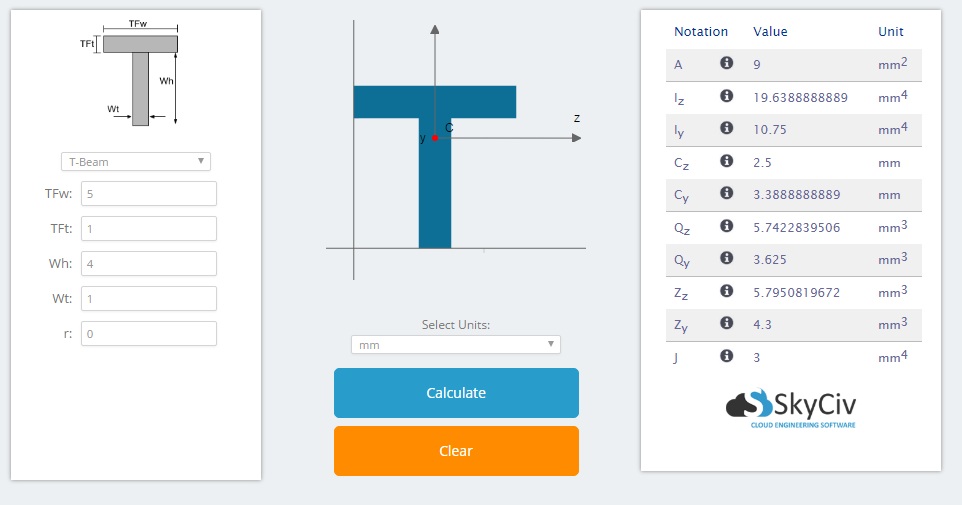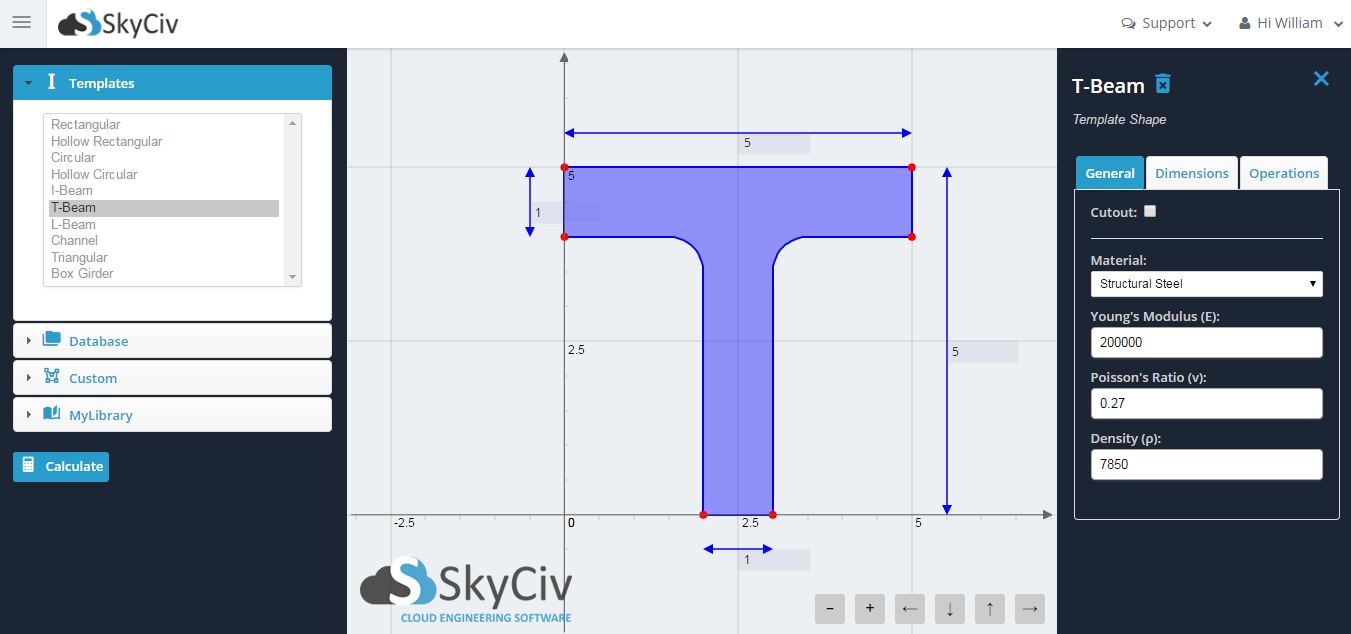Anything designed well should feel easy and seamless. This hasn't always translated well to engineering software which in the past prioritised power and functionality. But why not have the best of both worlds? This was the mindset we had when diving into an overhaul of our Section Builder software, which you can find in SkyCiv Beam and SkyCiv Structural 3D.
SkyCiv is a lean, tight knit team. As the newest developer tasked with the job, I was eager to make my mark with my first major project. Being the newest set of eyes on the existing software, previous design conventions were questioned and a fresh new user experience was developed. This all started from a concept sketch, which over the coming months developed to a full featured application.

- Dimension lines appear (and can be hidden) on the shape.
- Modifications to dimensions can now be done directly on the shape.
- Removal of the small shape preview image.
- A design area which allows for zooming and panning.
- Scale on the axes.
- A left navigation bar dedicated to adding new shapes.
- A right navigation bar dedicated to customising individual shapes.

At the forefront of our minds, it was important for us to preserve the features that our users enjoyed in the existing software. You can still add a shape from one of our standard templates, make some quick changes to the dimensions, and get the section properties with the click of a button.
However now you can do so much more. Ever wanted to add multiple shapes? Or define your own shape? Specify some cutouts? Now you can.
Importantly, the key new features of the software include:- Built up sections can be modelled by adding multiple shapes onto the design area.
- Custom shapes can be defined via points of a shape or the path and thickness of a line.
- Supports DXF imports to define custom shapes created through CAD packages.
- Holes and cutouts can be specified.
- Operations including rotation, translation, and mirroring can be use to specify relative positioning.
- Individual shapes can be assigned individual materials.
- Calculations can be performed on built up sections and custom shapes.
- Calculations on a composite material section can be performed via the Transformed Section Method.
Under the hood, much of the underlying mathematical calculations changed. This needed to happen in order to accommodate any possible shape the user could throw at the new section builder. We took the concepts back to first principals and made a concerted effort into R&D on the new methods.
I hope you're all as excited for the new section builder as I am. I welcome user feedback on both a functional and user experience level.
Engineer and Software Developer
BEng Mechanical (Hons1)



